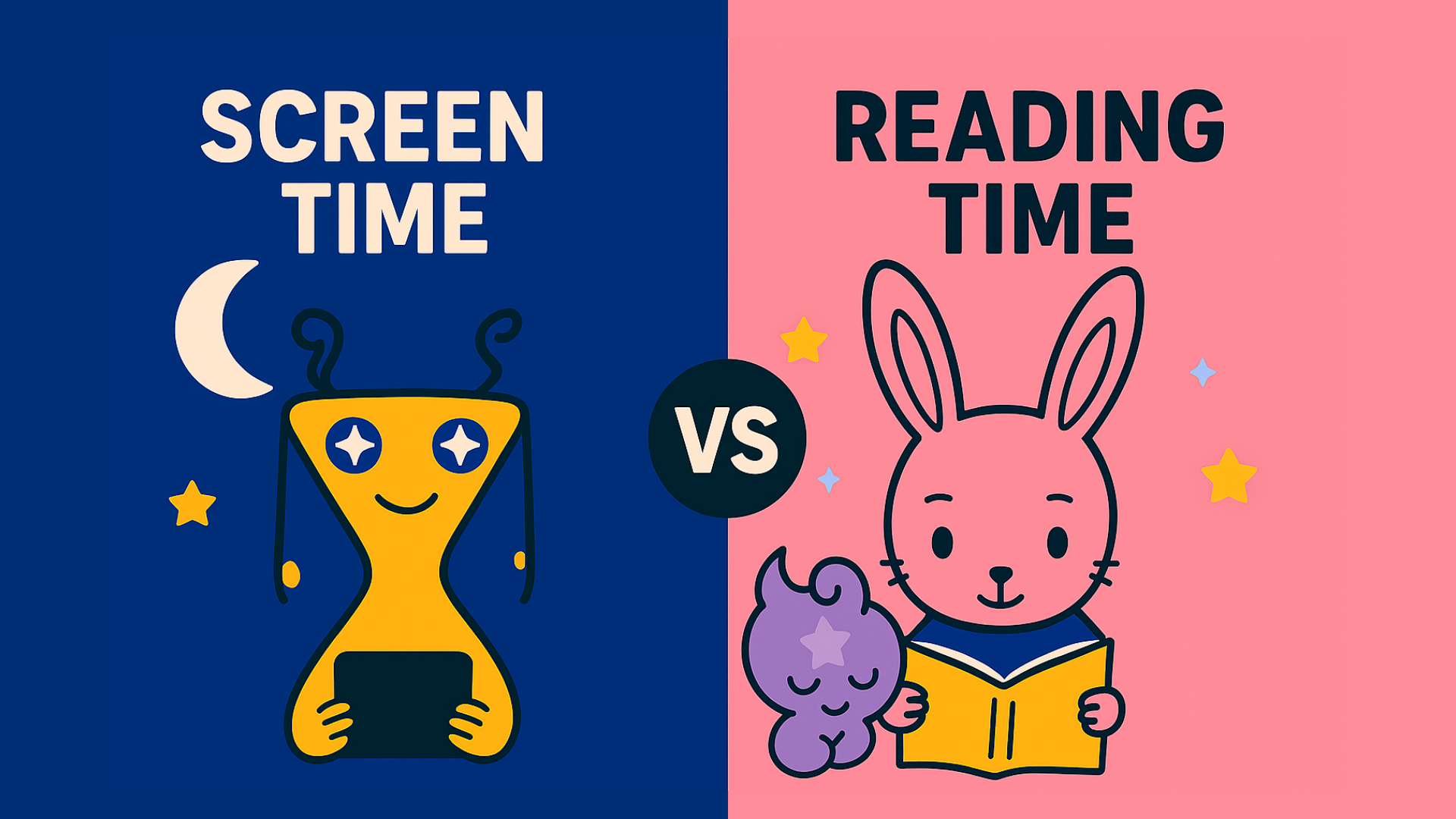Screens are part of daily life for today’s kids. Many children know how to swipe before they can even speak. As a parent, you want your child to fall in love with reading, but with games, videos, and apps competing for their attention, that can feel like a constant struggle.
The solution isn’t to eliminate screen time; it’s to change how we use it. When digital tools are designed with intention, they can fuel imagination, boost confidence, and make reading feel just as exciting as anything else on a device.
The Problem: Reading Is in Decline
By age 9, reading for fun drops off dramatically, a phenomenon known as the "Decline by 9."¹ The reasons?
- Books often don’t match children’s reading levels or interests
- Parents are too busy to hunt down new titles
- Digital content is more accessible and more engaging
Additionally, Common Sense Media reports that tweens now spend nearly 5 hours per day on screens for entertainment.² So how can we keep kids reading without fighting a losing battle against devices?
The Solution: Make Reading as Engaging as Screens
To raise lifelong readers in a digital world, we need to change how stories are delivered. The goal isn’t to take children off screens, but to make reading just as engaging, personalized, and interactive as the content they already enjoy.
By using technology to create stories that match their interests and reading level, we can turn reading into an experience they choose. When stories evolve with a child through visuals, customization, and co-creation, reading becomes something they are drawn to instead of something they are forced to engage in.
Reading and screen time don’t have to compete. When thoughtfully combined, they can create meaningful, joyful experiences that help children grow as readers.
Meeting Kids Where They Are: On Screens
Embracing technology can transform passive consumption into active, educational creation. Through tailored themes and adaptive reading levels, children create stories that grow with them, helping to strengthen literacy, critical thinking, and emotional expression.
Our research confirms that this is what families are looking for. In a recent survey of over 500 parents, the majority expressed a desire for more opportunities to co-read and co-create stories with their children.³
References
- Scholastic. (2019). Kids & Family Reading Report: 7th edition. https://www.scholastic.com/readingreport
- Common Sense Media. (2023). The Common Sense Census: Media use by tweens and teens, 2023. https://www.commonsensemedia.org/research
- Chronicle Creations. (2025). Internal parent survey data (N = 500).

 All Posts
All Posts
